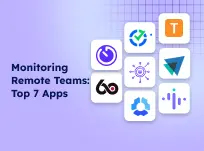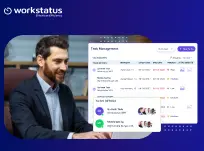Table of Contents
Introduction
In a world where every moment counts, keeping track of productivity has never been more critical.
In the pursuit of efficiency, businesses and individuals constantly seek new ways to optimize their workflows and get more done in less time.
The latest frontier in this ongoing quest for productivity gains is the automation of data, a trend that promises to revolutionize how we monitor and enhance our performance.
As we dive into the intriguing world of data automation, we’ll explore its significance, potential benefits, and how it’s poised to reshape the landscape of productivity monitoring.
So, let’s embark on this journey to discover how automating data is the next big step toward working smarter, not harder.
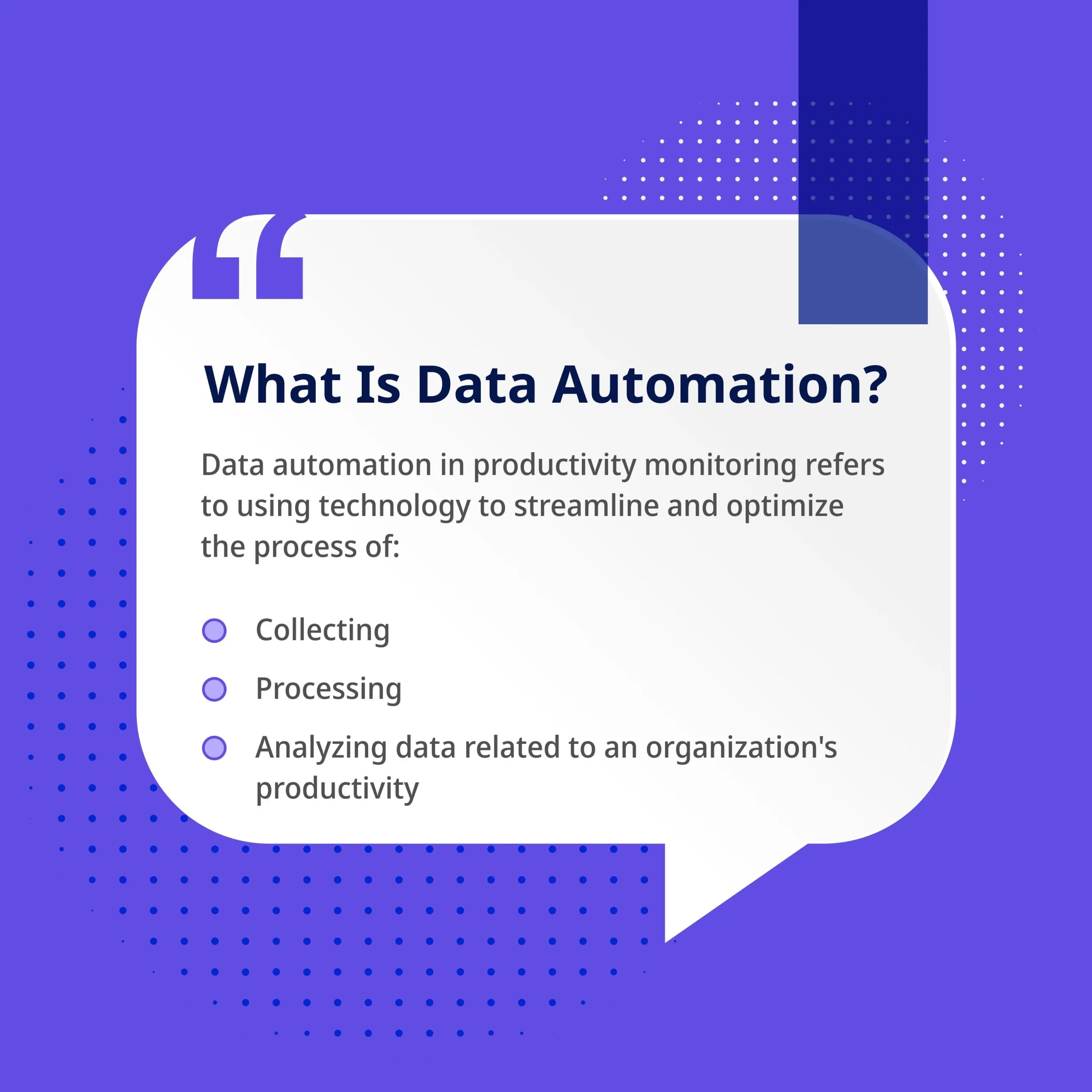
It automatically gathers, integrates, and interprets data from various sources, reducing the need for manual data entry & analysis.
The Rising Need For Automating Data In Productivity Monitoring
Several compelling factors drive the rising need for automating data in productivity monitoring. Here are five key reasons why organizations are increasingly embracing data automation
1. Data Overload
Modern businesses generate vast amounts of data daily, making manual data processing and analysis unmanageable. Data automation helps in efficiently handling this data influx.
2. Real-Time Decision-Making
In a fast-paced environment, real-time decision-making is crucial. Automation provides up-to-the-minute insights, enabling organizations to respond promptly to changing conditions.
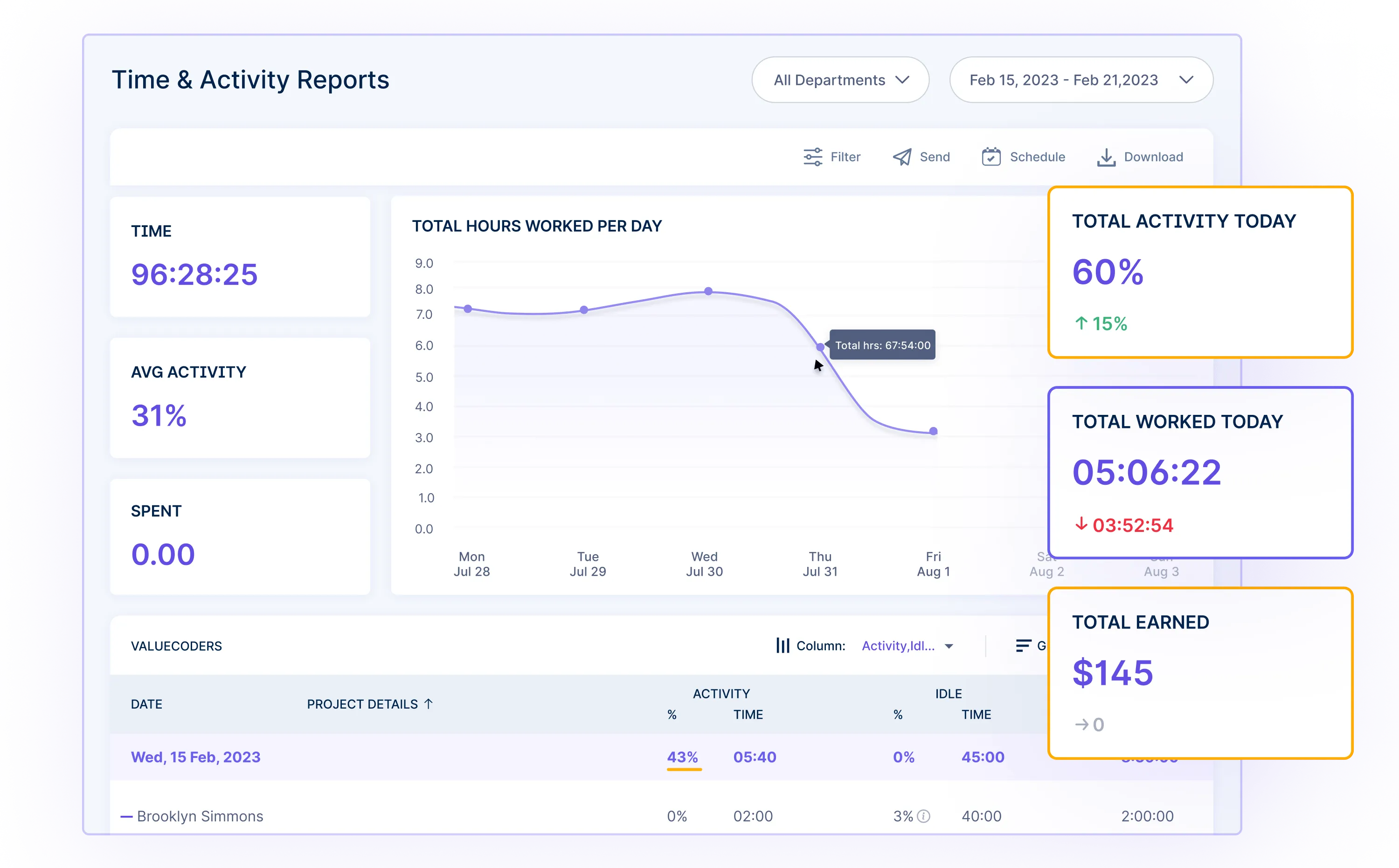
3. Accuracy and Consistency
Automation eliminates human error, ensuring data accuracy and consistency in monitoring processes. This leads to more reliable performance assessments.
4. Cost Savings
Automation reduces the time and resources required for data-related tasks, leading to cost savings in the long run. It frees up human resources for more strategic activities.
How Automating Data For Productivity Monitoring Works?
1. Data Collection
The process begins with integrating tools like Workstatus into your workflow. Workstatus helps track employee activities, time spent on tasks, and project progress. It collects data through automated time tracking, activity level monitoring, and task management features.
Workstatus helps track employee activities, time spent on tasks, and project progress. It collects data through automated time tracking, activity level monitoring, and task management features.
2. Data Integration
Once data is collected from various sources, it must be integrated into a central platform.
Workstatus can feed data into a centralized database or analytics system, ensuring all information is accessible from one place.
3. Data Processing
Next, the data is processed using algorithms and machine learning capabilities to accurately identify patterns and trends.
Workstatus utilizes AI-based algorithms as part of its data-driven decision-making tools to analyze productivity data and provide valuable insights for better decision-making.
4. Data Analysis
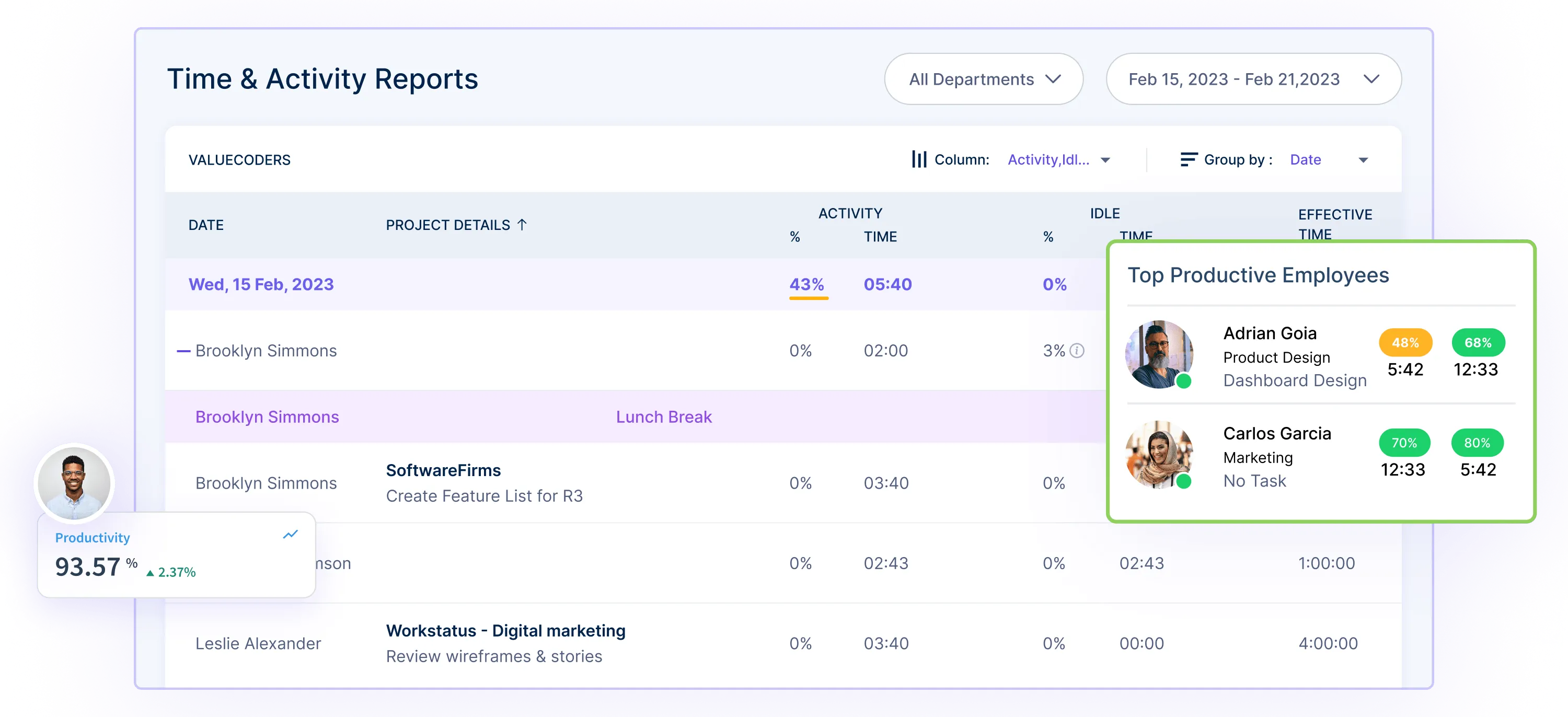
The processed data is then analyzed to generate real-time reports and dashboards that comprehensively view productivity levels.
With Workstatus, customizable reports allow businesses to track specific metrics and measure performance against set goals.
5. Actionable Insights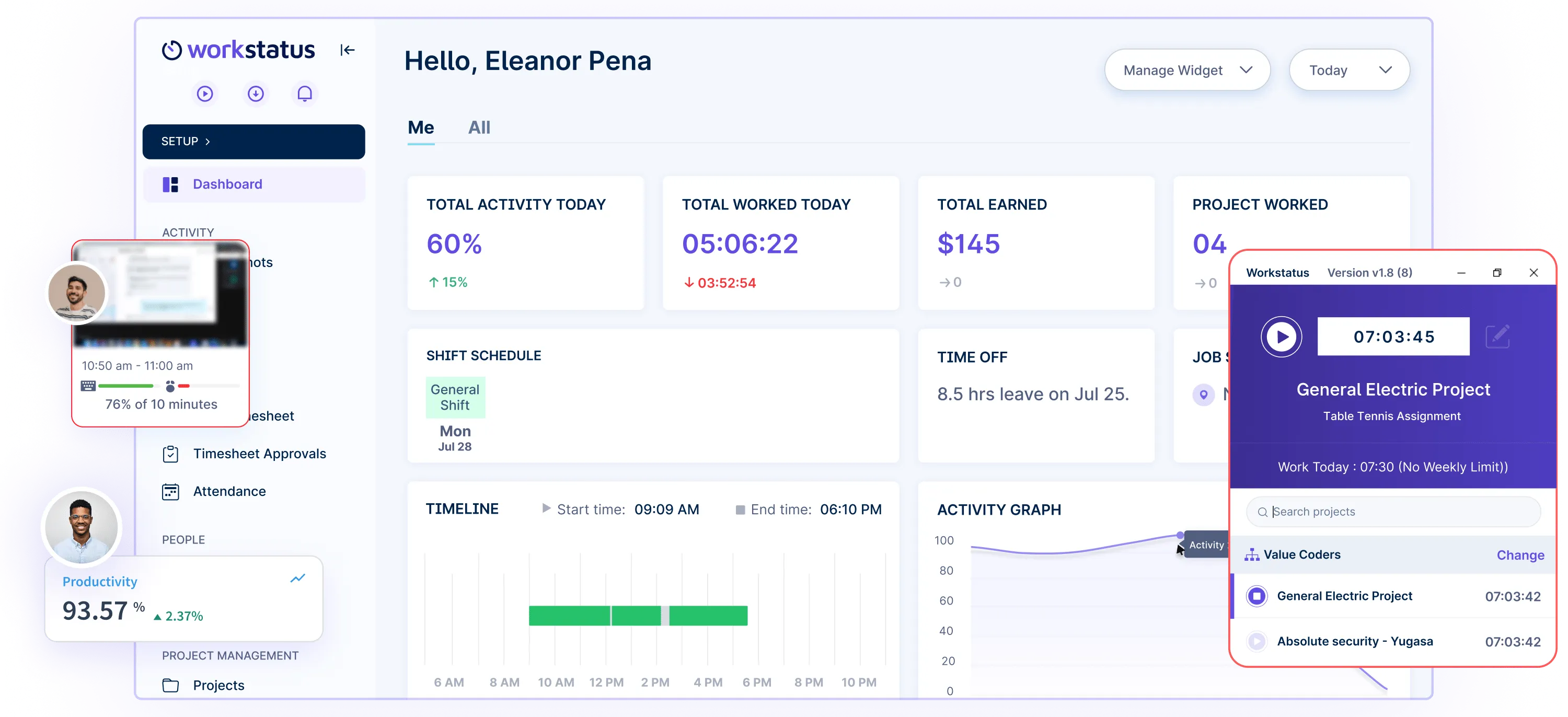
The last step involves using the insights provided by automation to take actionable steps in improving productivity.
Workstatus’s alerts and notifications help managers identify potential bottlenecks, monitor employee engagement levels, and implement new strategies forenhanced efficiency.
This is how automating data for productivity monitoring works, providing organizations with a powerful tool to track, analyze, and improve performance.
Now, let’s understand how automating data for productivity monitoring helps companies fetch data on their workforce working under different challenges of different setups.
For On-Premise Workforce
Challenge
On-premise workforces often face challenges related to manual time tracking, inefficient task allocation, and the need for real-time monitoring.
Traditional methods rely on manual punch-in/punch-out systems, making it hard to track and manage productivity accurately.
Solution:
1. Automated Time Tracking 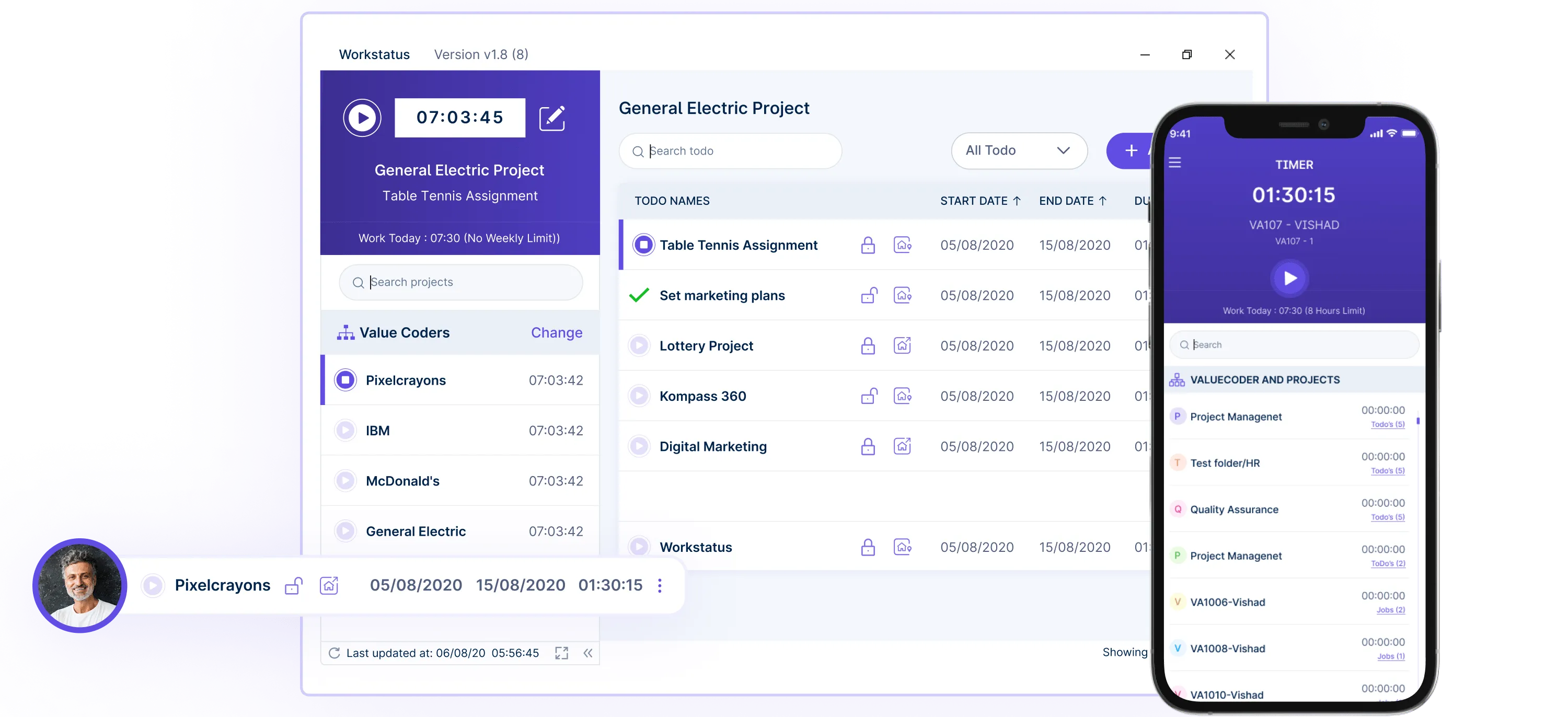
Workstatus offers automated time tracking, eliminating the need for manual entries.
Employees can simply start and stop tasks or projects, and Workstatus records the time spent. This automation ensures accurate tracking without relying on manual inputs.
2. Geofencing
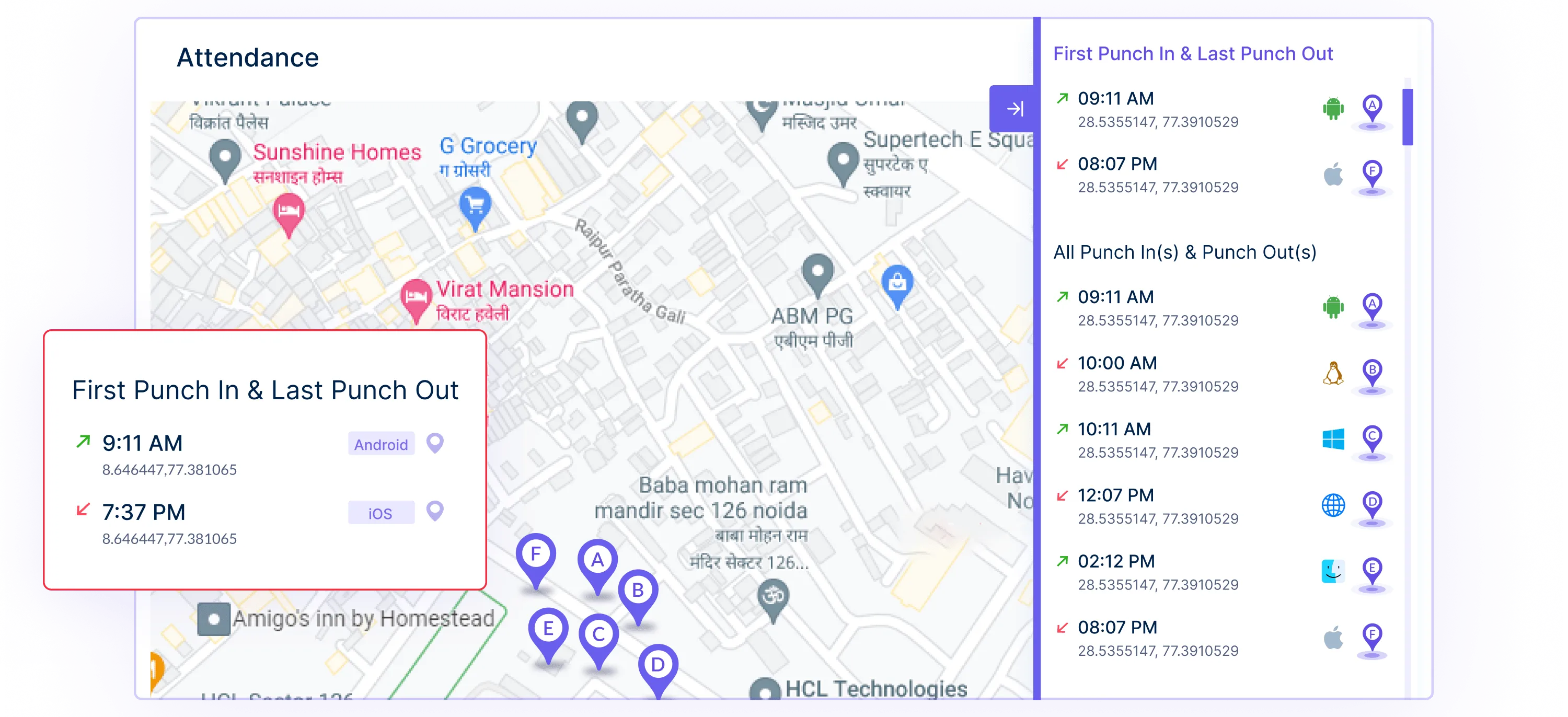
For on-premise teams, geo-fencing is crucial. Workstatus allows you to set geographical boundaries, and when employees enter or exit these areas, it automatically logs their attendance.
This ensures that employees are on-site when they should be.
3. Real-Time Monitoring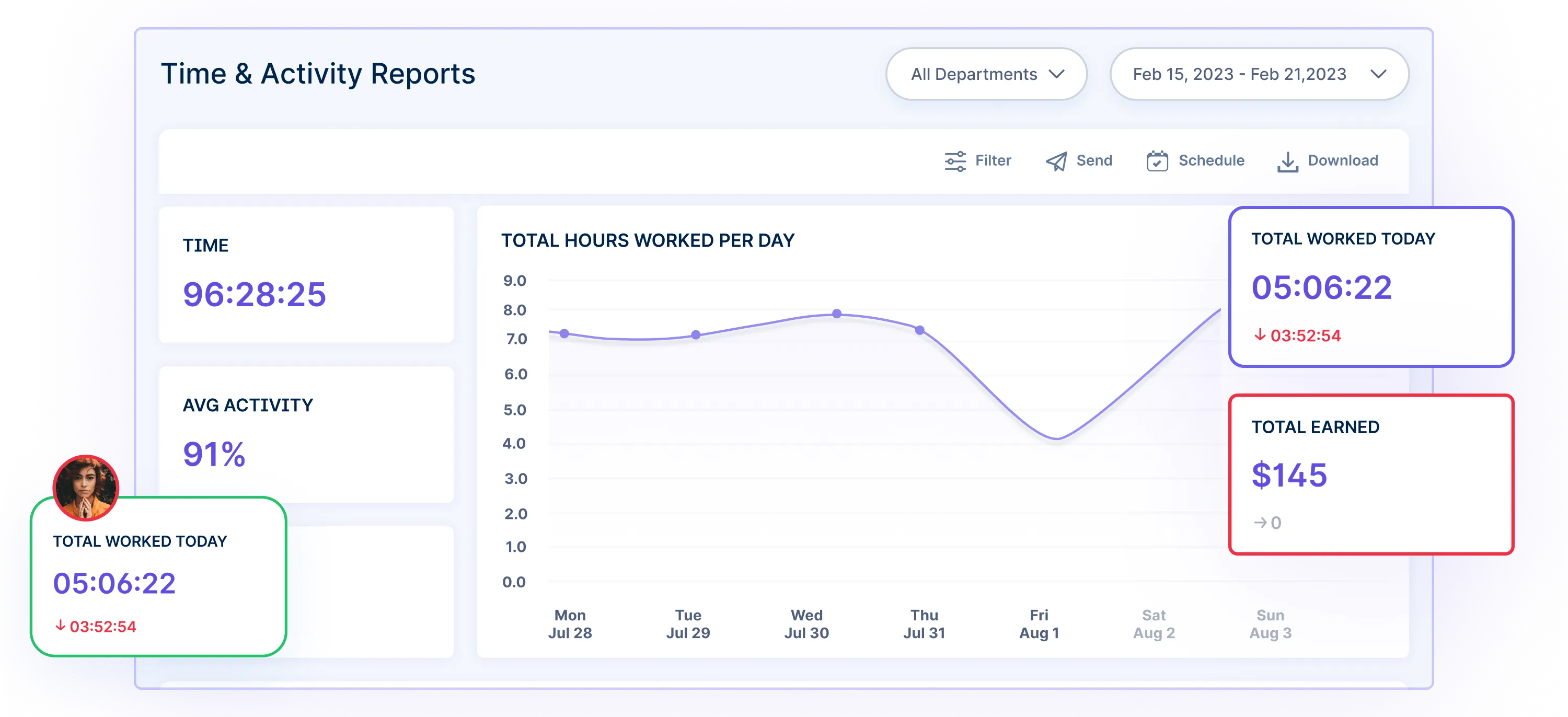 Workstatus provides real-time activity level monitoring, allowing managers to oversee productivity as it happens.
Workstatus provides real-time activity level monitoring, allowing managers to oversee productivity as it happens.
If an employee’s activity level drops significantly, it can trigger an alert, helping managers address productivity issues promptly.
4. Task and Project Management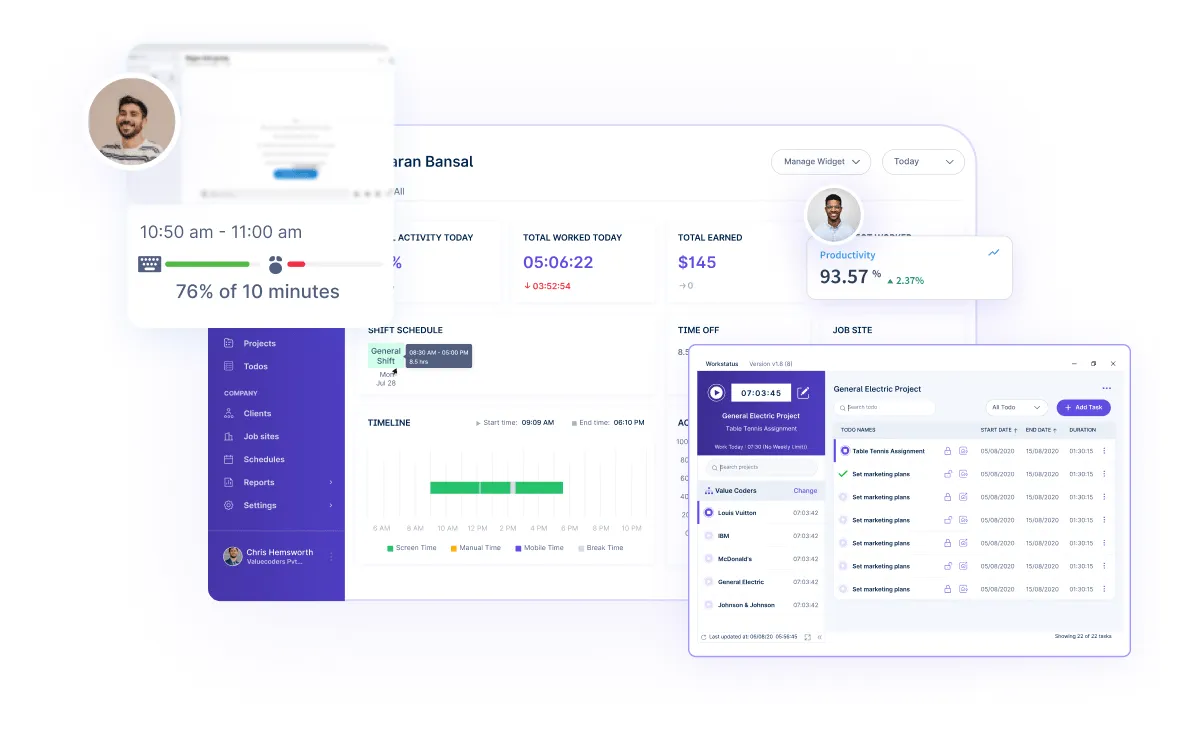 Workstatus assists in task allocation and project management by assigning tasks, setting priorities, and tracking progress. This ensures that employees work on the right tasks, boosting overall efficiency.
Workstatus assists in task allocation and project management by assigning tasks, setting priorities, and tracking progress. This ensures that employees work on the right tasks, boosting overall efficiency.
By addressing these challenges and offering solutions tailored for on-premise workforces, Workstatus enhances data automation for productivity monitoring in this environment.
For Remote Workforce
Challenge
Managing a remote workforce presents unique challenges, such as tracking activities without physical presence, ensuring attendance, and maintaining productivity. Traditional methods often fall short of providing accurate data in such scenarios.
Solution:
1. Activity Monitoring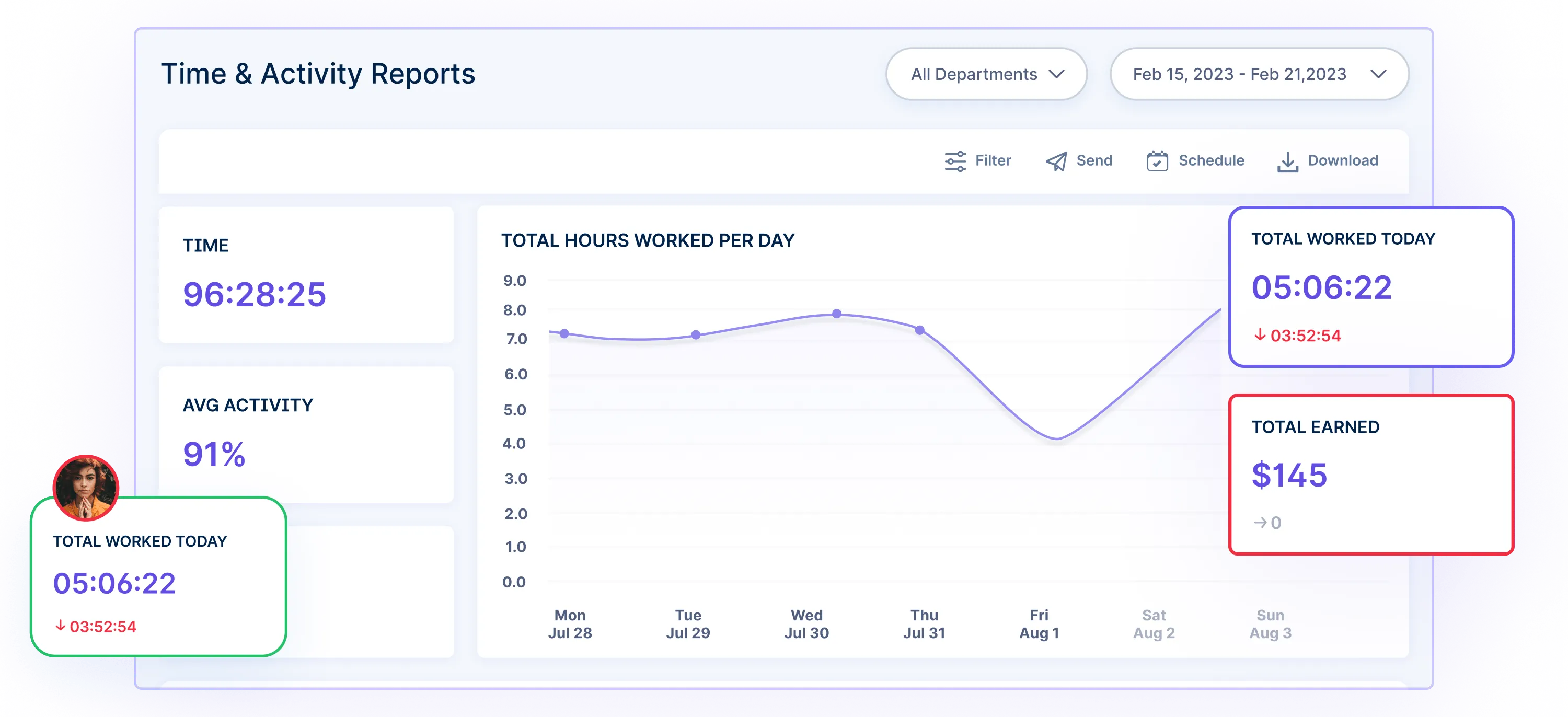
Workstatus tracks the URLs visited and applications remote employees use, offering a detailed view of their activities.
This feature ensures that employees are engaged in productive tasks, helping automate data collection for productivity monitoring.
2. Screenshot Capturing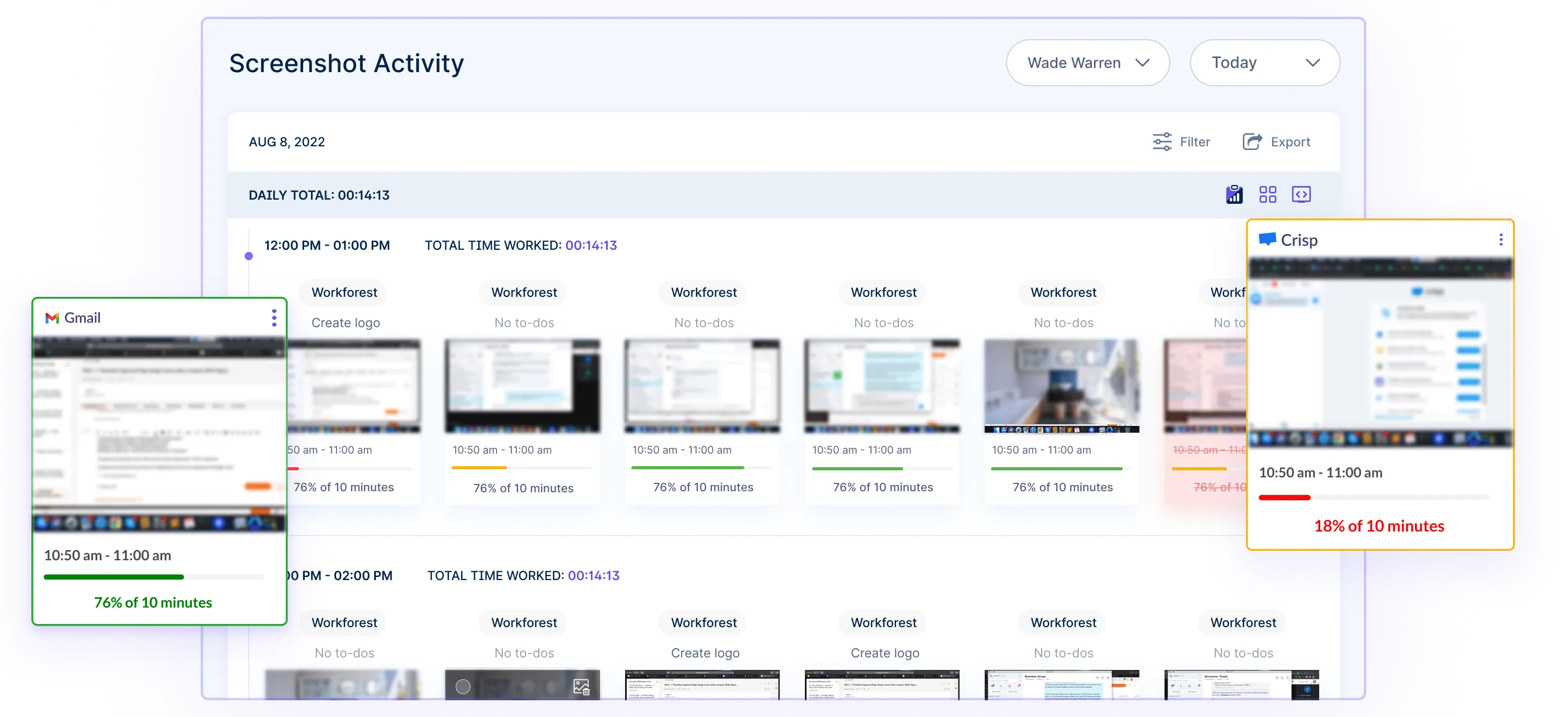
Workstatus captures screenshots regularly, providing visual evidence of work in progress. This helps verify that remote employees are on track and focused on their tasks.
3. GPS Tracking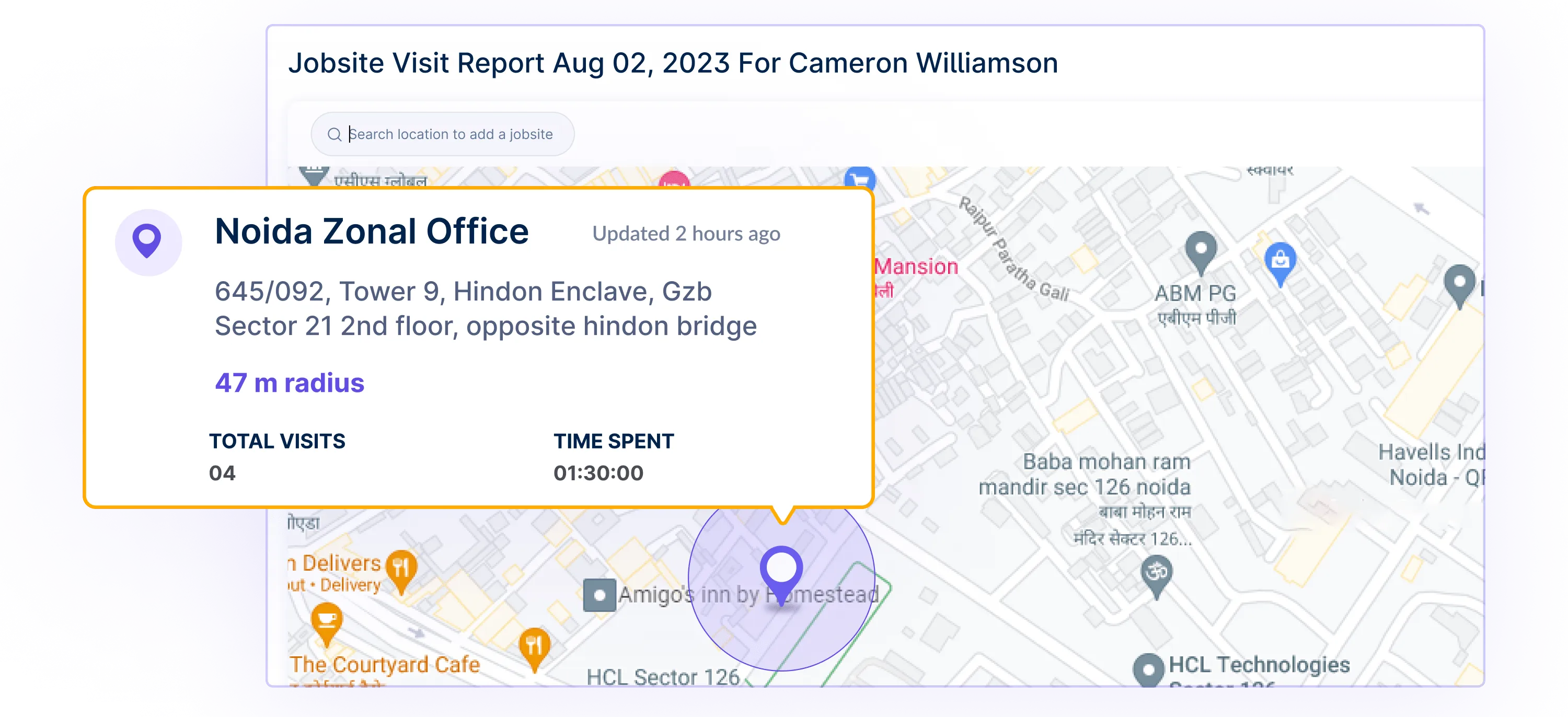
With GPS tracking, Workstatus ensures remote employees work from designated locations. This feature is handy for field teams and remote workers who need to be at specific sites.
4. Attendance Management With Selfie Validation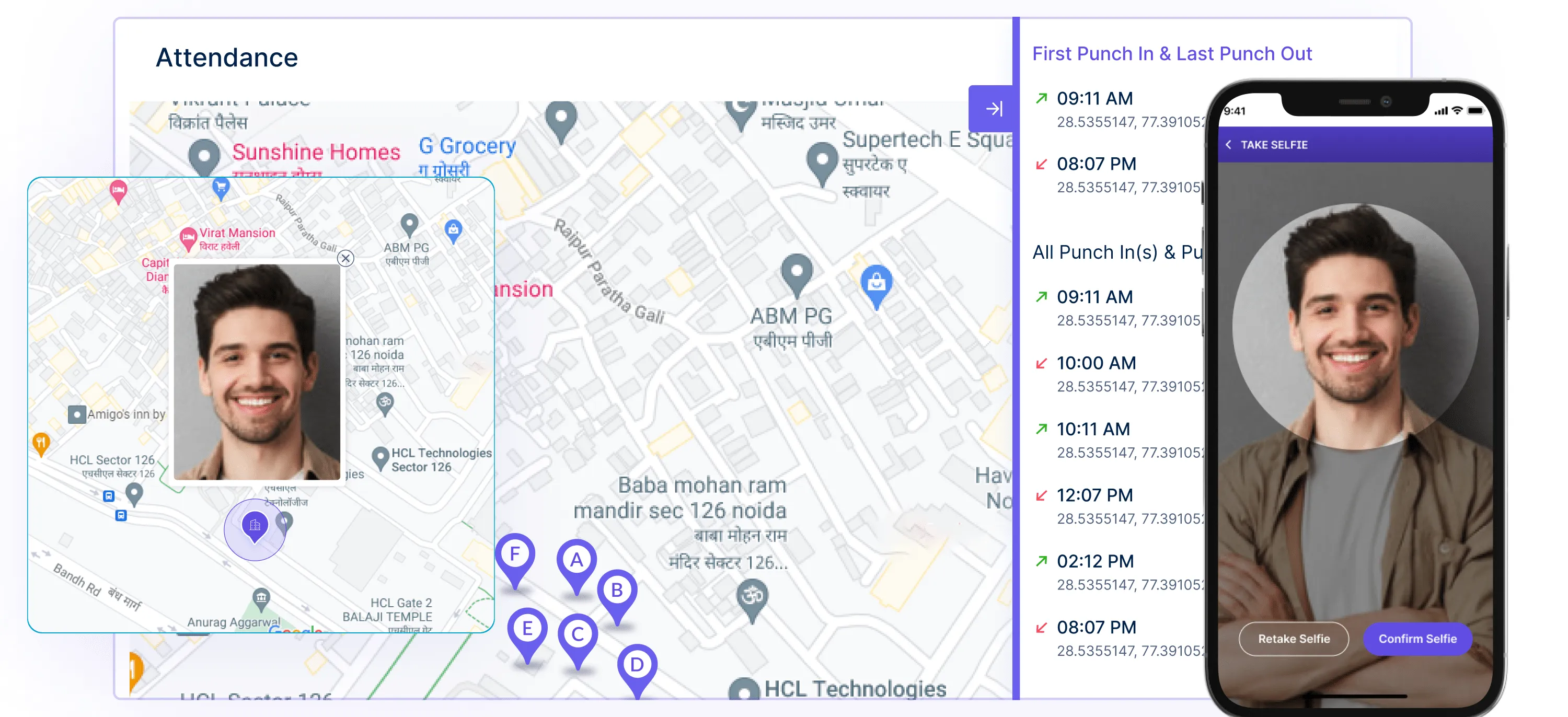
Workstatus simplifies attendance management for remote workers by requiring selfie validation when they clock in and out.
This ensures the authenticity of attendance records, making it easier to automate attendance data.
By offering these specific features, Workstatus caters to the challenges of managing a remote workforce. It allows companies to effectively automate data collection for productivity monitoring, even when employees work from various locations.
For Hybrid Workforce
Challenge
Managing a hybrid workforce that combines on-premise and remote employees brings data consolidation and reporting challenges. Maintaining uniform productivity monitoring for both groups can be complex and time-consuming.
Solution:
1. Central Dashboard
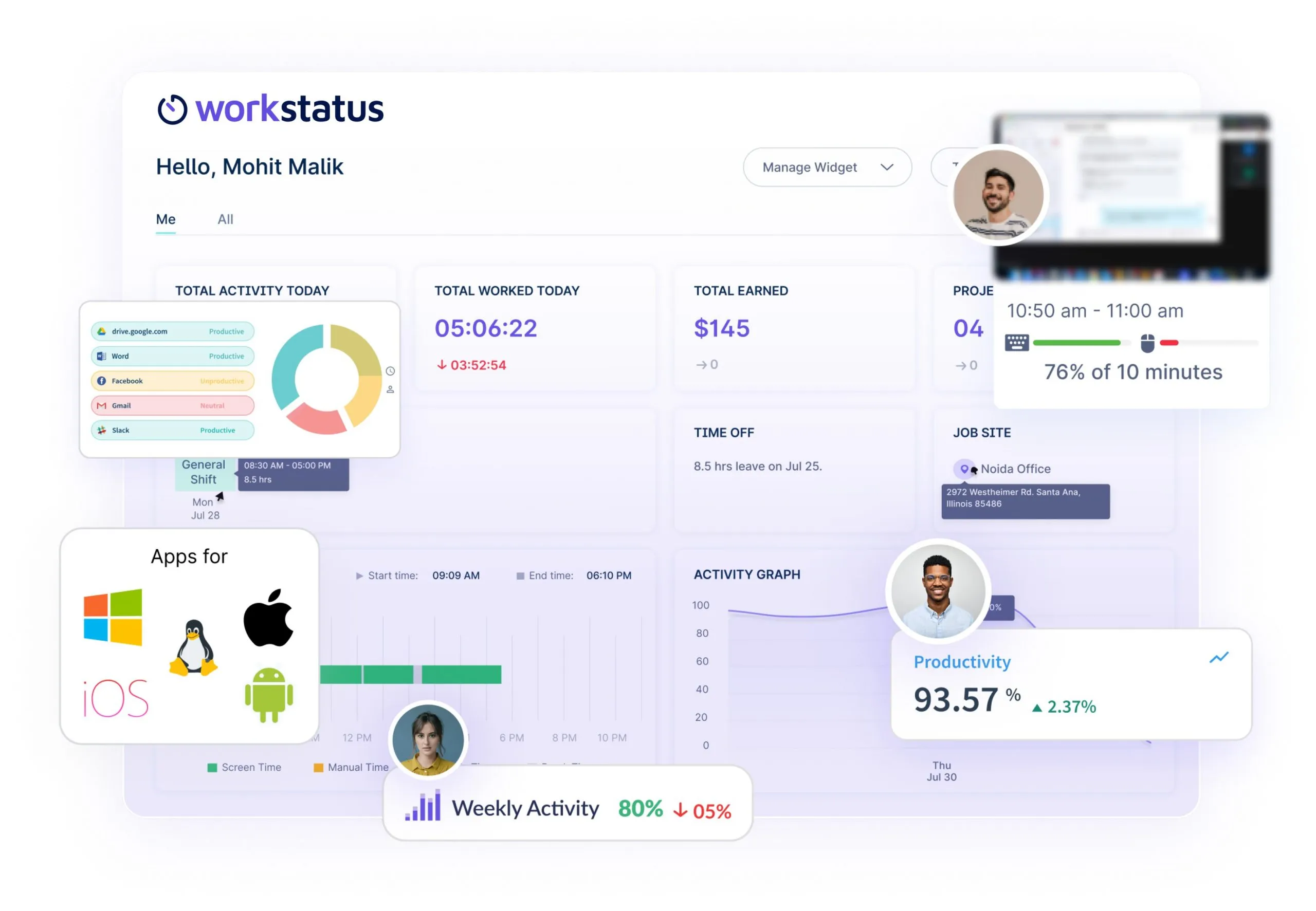
Workstatus offers a centralized dashboard that integrates data from both on-premise and remote workers. This provides a unified view of productivity metrics, making automating data collection and monitoring easier across a hybrid workforce.
2. AI-Powered Reports
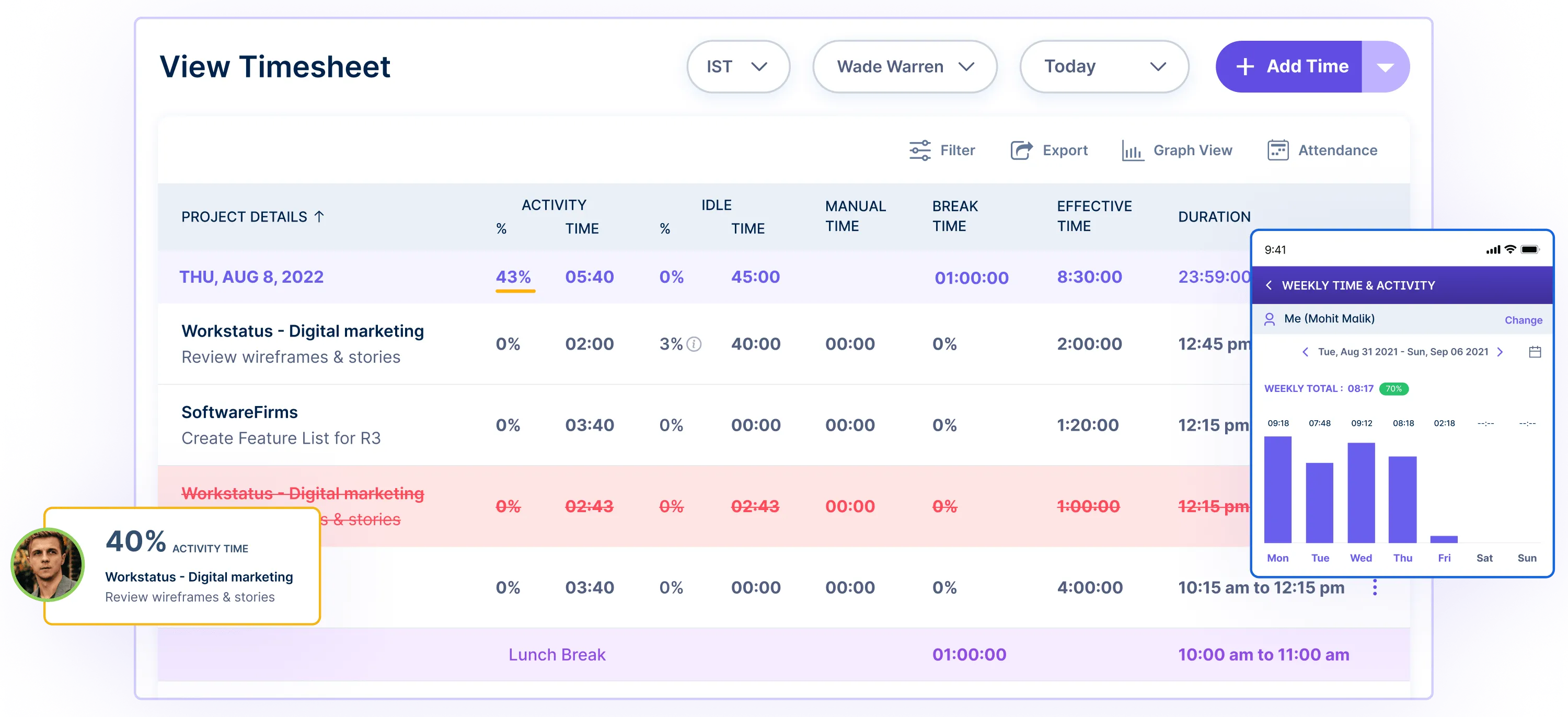
Workstatus’s AI-powered reports cover various aspects of productivity, including:
- Time and activity tracking
- Weekly performance
- App and URL usage
- Project and task reports
These reports offer in-depth insights into productivity trends, helping organizations make data-driven decisions.
3. Integration

Workstatus integrates with various productivity and project management tools. This integration capability ensures data flows smoothly between systems, further streamlining data automation for productivity monitoring.
For organizations with a hybrid workforce, Workstatus simplifies the complexities of data automation for productivity monitoring.
It provides a centralized hub for data, AI-powered reporting, and the flexibility to integrate with existing systems, making it an ideal choice for monitoring productivity in a diverse workforce environment.
So, this is how automating data is poised to revolutionize how we track, analyze, and improve productivity.
Future Of Automating Data
The future of automating data and the next phase in productivity monitoring promises several exciting developments. Here are few
1. AI and Machine Learning Integration
Automation in data management and productivity monitoring will increasingly leverage AI and machine learning algorithms.
These technologies enable systems to learn and adapt to changing data patterns and user behaviors. They will also offer predictive analytics for identifying trends and issues before they become critical.
2. Enhanced Data Visualization
Advanced data visualization techniques will make it easier for users to understand and interpret complex data. ‘
These visualizations will help stakeholders quickly identify patterns, anomalies, and areas for improvement. Augmented reality (AR) and virtual reality (VR) technologies may also provide immersive data experiences.
3. Privacy and Security Considerations
As more data is collected and automated, privacy and security will be paramount.
Ensuring that sensitive information is protected and compliant with regulations will be a top priority.
Automation must include robust encryption, access controls, and data anonymization techniques to maintain data integrity and user trust.
The future of automating data and productivity monitoring is poised to be dynamic and transformative, enhancing businesses’ ability to optimize operations, make data-driven decisions, and respond to changes in real-time.
Conclusion
Automating data for productivity monitoring offers significant benefits to organizations.
It streamlines time-consuming data-related tasks, enhances accuracy and consistency, provides real-time insights, and facilitates cost savings.
With the help of tools like Workstatus, organizations can embrace data automation and unlock its full potential to boost productivity levels.
So, whether you have an on-premise, remote, or hybrid workforce, now is the time to automate your data for efficient productivity monitoring.



